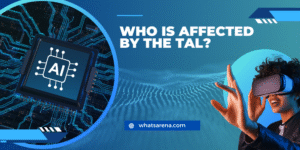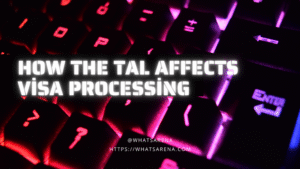In a world where technology evolves at lightning speed, governments and regulatory bodies must stay ahead of potential threats. 1 of the critical tools used by the U.S. government to monitor and manage security risks associated with sensitive technologies is the Technology Alert List (TAL). Whether you’re a student applying for a U.S. visa in a science-related field or a business involved in international tech trade, understanding the TAL is crucial.
This blog explores the Technology Alert List, its purpose, who it affects, and why it plays a vital role in national security.
What is the Technology Alert List (TAL)?
The Technology Alert List (TAL) is a document maintained by the U.S. Department of State that identifies fields of study and technologies deemed sensitive from a national security or nonproliferation standpoint. It is primarily used during visa processing to flag applicants whose research or professional background might involve dual-use technologies (civilian and military use).
The list helps consular officers decide whether a visa application should be subject to Visa Mantis clearance, a security check process conducted in collaboration with intelligence agencies.
Purpose of the Technology Alert List
The main goal of the Technology Alert List (TAL) is to prevent the unauthorized transfer of sensitive technology and knowledge to foreign entities or governments that could use it against the interests of the United States. This includes technologies related to:
- Nuclear technology
- Chemical and biological weapons
- Advanced missile systems
- Military electronics
- Artificial Intelligence (AI)
- Robotics and quantum computing
Who is Affected by the TAL?

The Technology Alert List primarily impacts:
- International Students and Researchers
Especially those pursuing graduate-level programs or conducting research in fields mentioned in the TAL. - Academic Institutions
Universities and colleges hosting international scholars must understand TAL to support their visa applications. - Businesses and Tech Companies
Particularly those involved in exporting technology or collaborating with foreign researchers. - Visa Applicants
Especially for F-1 (students), J-1 (exchange visitors), and H-1B (temporary workers) visas.
How the TAL Affects Visa Processing

Under the Visa Mantis security clearance process, additional screening is performed on a visa application that has been flagged due to TAL. This can:
- Delay the visa approval process (sometimes by several weeks or even months)
- Require the submission of additional documents (e.g., resume, research summary, publications)
- In rare cases, results in visa denial
The objective is not to prevent legitimate research or collaboration but to ensure it doesn’t contribute to foreign military or strategic capabilities.
Fields Commonly Flagged by the TAL
Here are some common fields that often trigger TAL reviews:
| Technology Area | Examples |
| Nuclear Technology | Nuclear reactors, enrichment, radioactive materials |
| Chemical/Biological Engineering | Bioweapons, hazardous chemicals, and synthetic biology |
| Rocketry and Missile Technology | Propulsion systems, navigation, and missile guidance |
| Advanced Computing | High-performance computing, quantum computing |
| Telecommunications | Satellite communication, secure signal transmission |
| Military Applications | Defense systems, encrypted military software |
What Should Visa Applicants Do?
If you’re applying for a U.S. visa and your field of study appears to overlap with TAL subjects, follow these tips:
- Be Transparent: Clearly explain the nature and purpose of your research.
- Provide Documentation: Include a resume/CV, academic transcripts, research proposals, and a detailed letter from your sponsoring institution.
- Start Early: Since processing may take longer, begin your visa application well in advance.
Why the TAL Is Controversial
While the TAL is essential for national security, it has also raised concerns:
- Academic Freedom: Some argue it may discourage international collaboration.
- Delays in Research: Visa delays can interrupt or derail academic projects.
- Discrimination Allegations: There are worries that the list disproportionately affects certain nationalities, especially students from China, Iran, and Russia.
Balancing security with openness in science and innovation remains a significant challenge.
Recent Updates and Trends
With growing geopolitical tensions and advancements in emerging technologies, the TAL continues to evolve. Recent additions include areas like:
- Quantum computing
- 5G and 6G telecommunications
- AI for military use
- Cybersecurity and hacking tools
Monitoring TAL updates is essential for academic institutions and global companies operating in these domains.
Conclusion
Technology Alert List is a vital part of the U.S. government’s efforts to protect sensitive technologies and prevent their misuse. While it may cause delays and added scrutiny for some visa applicants, it plays a crucial role in safeguarding national interests.
If you’re working or studying in a high-tech field and planning to travel to the U.S., understanding the TAL can help you prepare better and avoid unnecessary hurdles.
Quick Summary Table:
| Aspect | Details |
| Managed By | U.S. Department of State |
| Purpose | Prevent transfer of sensitive/dual-use technology to foreign entities |
| Affected Individuals | Students, researchers, tech professionals |
| Common Visa Types | F-1, J-1, H-1B |
| Security Clearance | Visa Mantis |
| Impact | Delays in visa processing, possible denials |
| Key Fields | Nuclear, AI, robotics, cyber, quantum, biotech |
FAQs
1. What is the Technology Alert List (TAL)?
The TAL is a list maintained by the U.S. Department of State that identifies fields of study and technologies considered sensitive due to national security or nonproliferation concerns. It is used during visa processing to screen applicants involved in these fields.
2. Who does the Technology Alert List affect?
The TAL primarily affects international students, researchers, and professionals in science, technology, engineering, and mathematics (STEM) fields applying for U.S. visas such as F-1, J-1, or H-1 B. It can also impact institutions and companies collaborating internationally.
3. What happens if my field of study is on the TAL?
If your field is on the Technology Alert List (TAL), your visa application may be subject to Visa Mantis clearance, a security review that can delay processing. You may be asked to provide additional documents about your research or background.
4. How long does TAL-related visa processing take?
Processing times can vary. While standard visas may be approved within weeks, TAL-related applications can take 30 to 90 days or more, depending on the complexity of the case and the workload of the reviewing agencies.
5. How can I avoid delays if my field is on the TAL?
- Start your visa application early.
- Provide a detailed resume, research summary, and supporting documents.
- Request a strong support letter from your academic advisor or employer explaining the peaceful, civilian nature of your work.
6. Is the TAL a public document?
While the TAL itself is not classified, it is not officially published online in its entirety. However, fields commonly associated with it are known through publicly available visa guidance documents and academic advisories.



